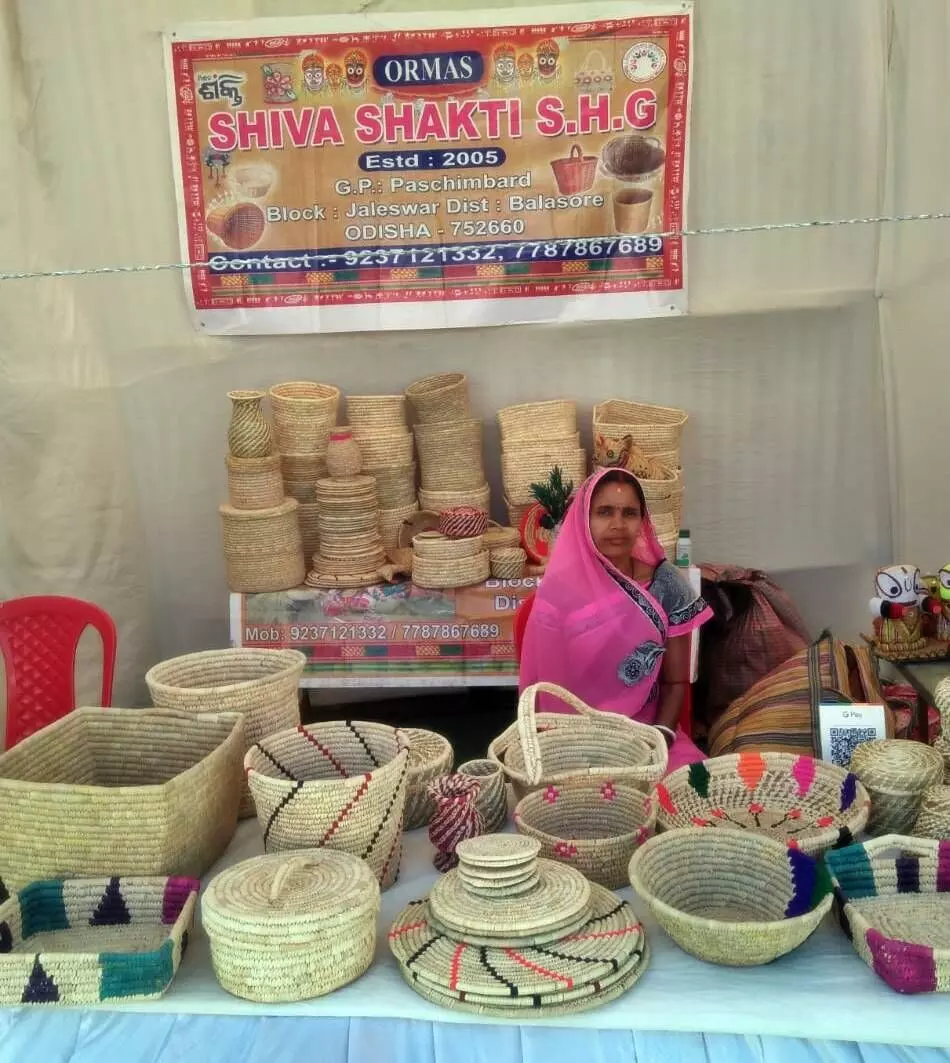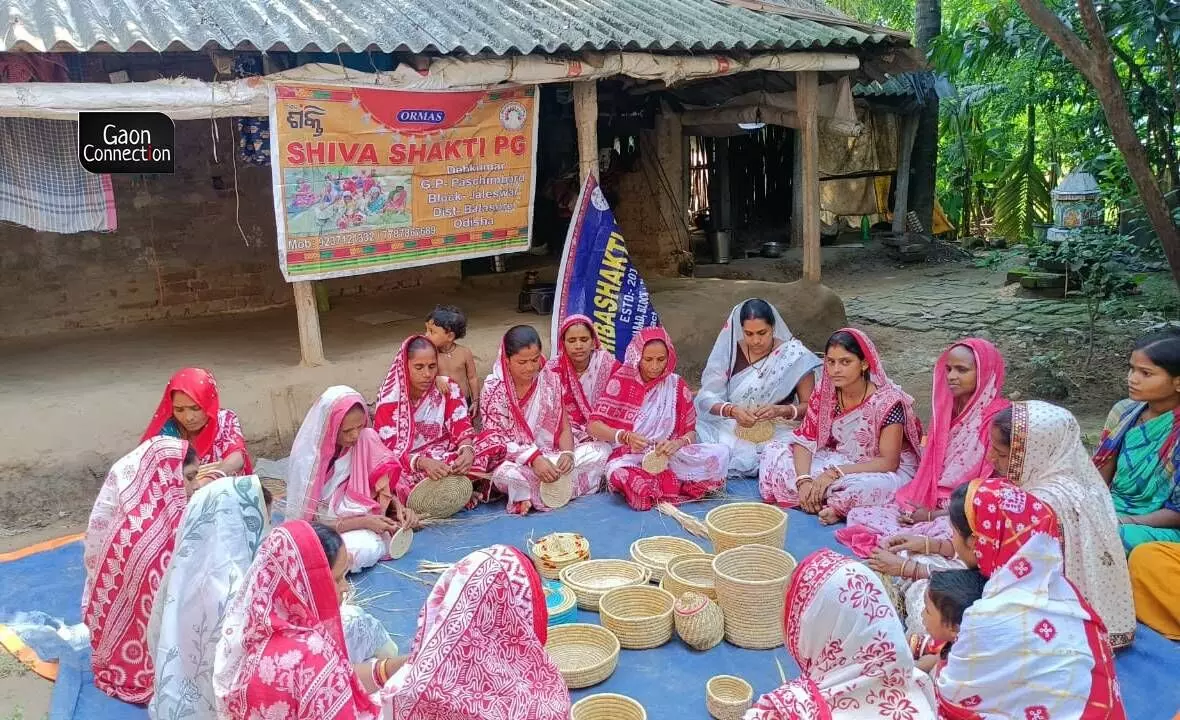Balasore, Odisha
Lilarani Jena was desperate when her husband deserted her and their infant daughter, two years ago. “It was terrible. My daughter was only two years old and I had no means of earning any money to support us,” Lilarani, who lives in Debakumar village, told Gaon Connection.
But a self help group (SHG) called Shiva Shakti in her village, which is located in Balasore district of Odisha, came to her rescue.
“Today, I earn enough to sustain myself and my daughter as I make handicrafts out of Sabai grass, as taught to me by the members of Shiva Shakti SHG,” the 28-year-old said gratefully. She earns anything up to Rs 6,000 a month, she said.
Grass earnings
Around 40 women from Lilarani’s village are earning a livelihood thanks to the Sabai grass out of which they craft products.
“We formed the SHG with 15 women in 2005 and began making Sabai grass hats, baskets, hand-fans, table-mats, flower-pots etc. These are now well known and in great demand,” Basanti Jena, the secretary of Shiva Shakti SHG, told Gaon Connection.

Mission Shakti is a state sponsored programme for empowering women in Odisha through Self Help Groups.
Also Read: Odisha: Vital for Tumba Craft, Bottle Gourd Ensures Livelihood to Tribal Families in Rayagada
Sabai grass (Eulaliopsis binata) grows wild and it is also cultivated. It is commonly found in Odisha and West Bengal. It is light, easy to work with, and can be dyed easily.
The grass which was earlier used only for rope making, has now found its use for more attractive products. It is being turned into mats, carpets, sofa sets, wall hangings, bags and other products.
“Sabai grass is strong and durable and a lot of people are preferring to buy them as the products made from them are eco-friendly, biodegradable and reduce the use of plastic,” Minati Jena, the president of the Shiva Shakti SHG, told Gaon Connection.
She went on to inform that the grass is cultivated in many tribal dominated villages of the neighbouring Mayurbhanj district as well. It is usually cultivated in less fertile highlands. Water requirement for growing of this plant is less as compared to other crops. The cost of a quintal of Sabai grass is Rs 2,000 to Rs 3,000, explained Minati Jena.
Odisha Rural Development and Marketing Society (ORMAS) provides skill up-gradation training to the women who make various products out of this grass, she added.
Also Read: The Jaukandhei lac doll-making tradition of Odisha sees a revival
Centuries old craft
The origin of this craft is centuries old. Traditionally, Sabai grass items like ropes, baskets, bowls, fans and mats were used as utility items in many parts of the state. Women during their leisure time made them at home for their own use.
“This traditional craft has been handed down from generations,” Bipin Rout, the joint chief Executive Officer of Odisha Rural Development and Marketing Society, told Gaon Connection.

The grass which was earlier used only for rope making, has now found its use for more attractive products.
Odisha Rural Development and Marketing Society provides training and helps in marketing the products in craft melas across the state and outside too, he said.
Women form a producers group
“We formed Shiva Shakti producers group in 2018 comprising of the three self-help groups — Gaga Balia, Trahi Achuta, and Jaya Guru. Each year we sell Sabai grass craft items worth 15 lakh rupees,” said Minati Jena.
The grass is purchased from neighbouring Mayurbhanj and the women get paid per piece they craft. Around 50 SHGs across the state make Sabai grass craft that are then sold at craft melas organised by Odisha Rural Development and Marketing Society.

The origin of this craft is centuries old. Traditionally, Sabai grass items like ropes, baskets, bowls, fans and mats were used as utility items in many parts of the state.
In 2020, the state government under the Shakti Mission provided them Rs two lakh to build a work shed, acquire furniture, etc. Mission Shakti is a state sponsored programme for empowering women in Odisha through Self Help Groups. It was launched in the state in 2001.
Earlier, middlemen bought the craft items from the women and sold them at a much higher price in the bigger towns and cities. “But now ORMAS directly purchases our craft items by paying us good money. A craft person earns around Rs 4,000 to Rs 7,000 per month by doing this work,” Rajalakhi Das a craft person in Debakumar village told Gaon Connection.
The grass is indeed greener in Debakumar village of Balasore, Odisha!


















